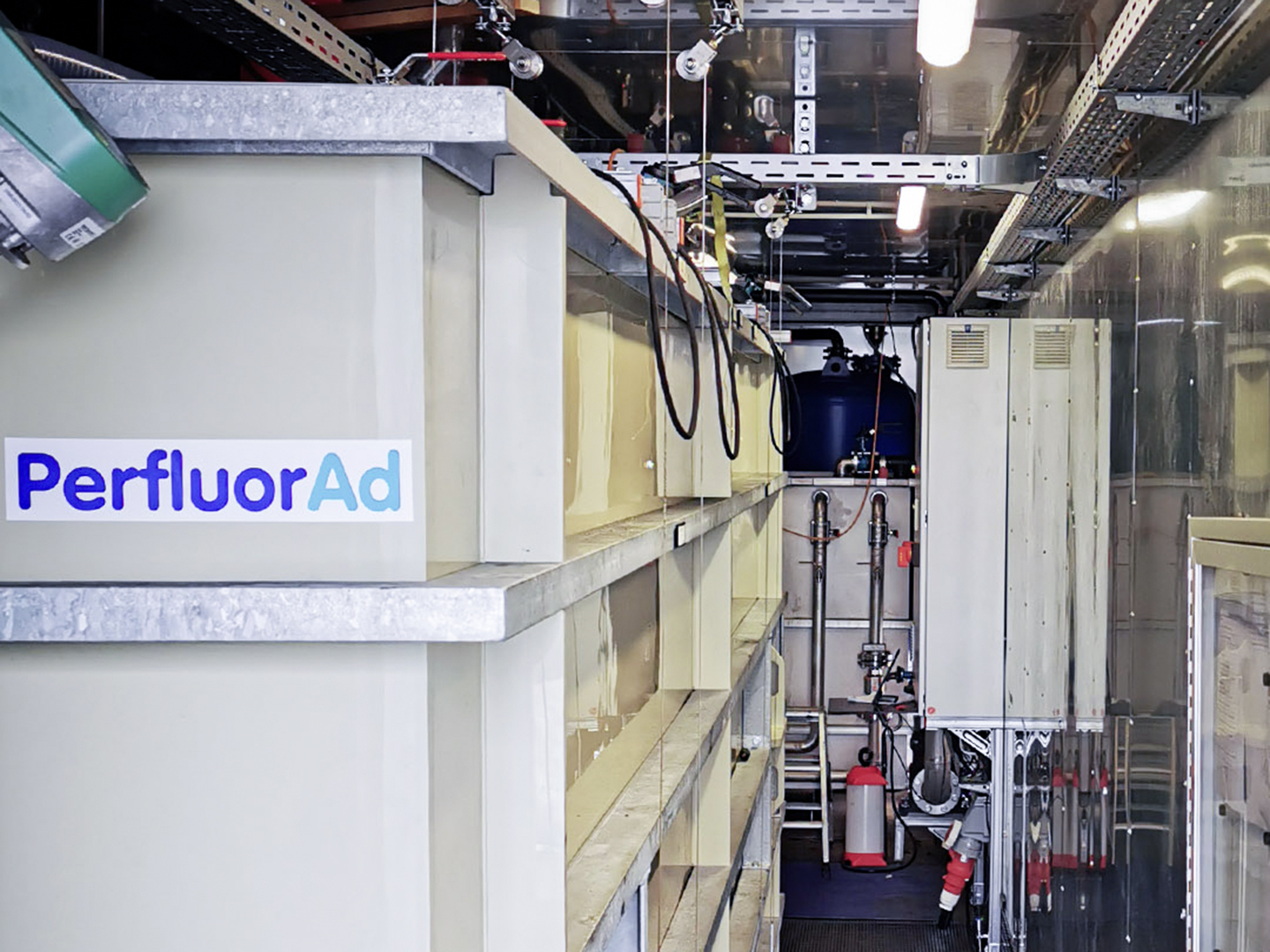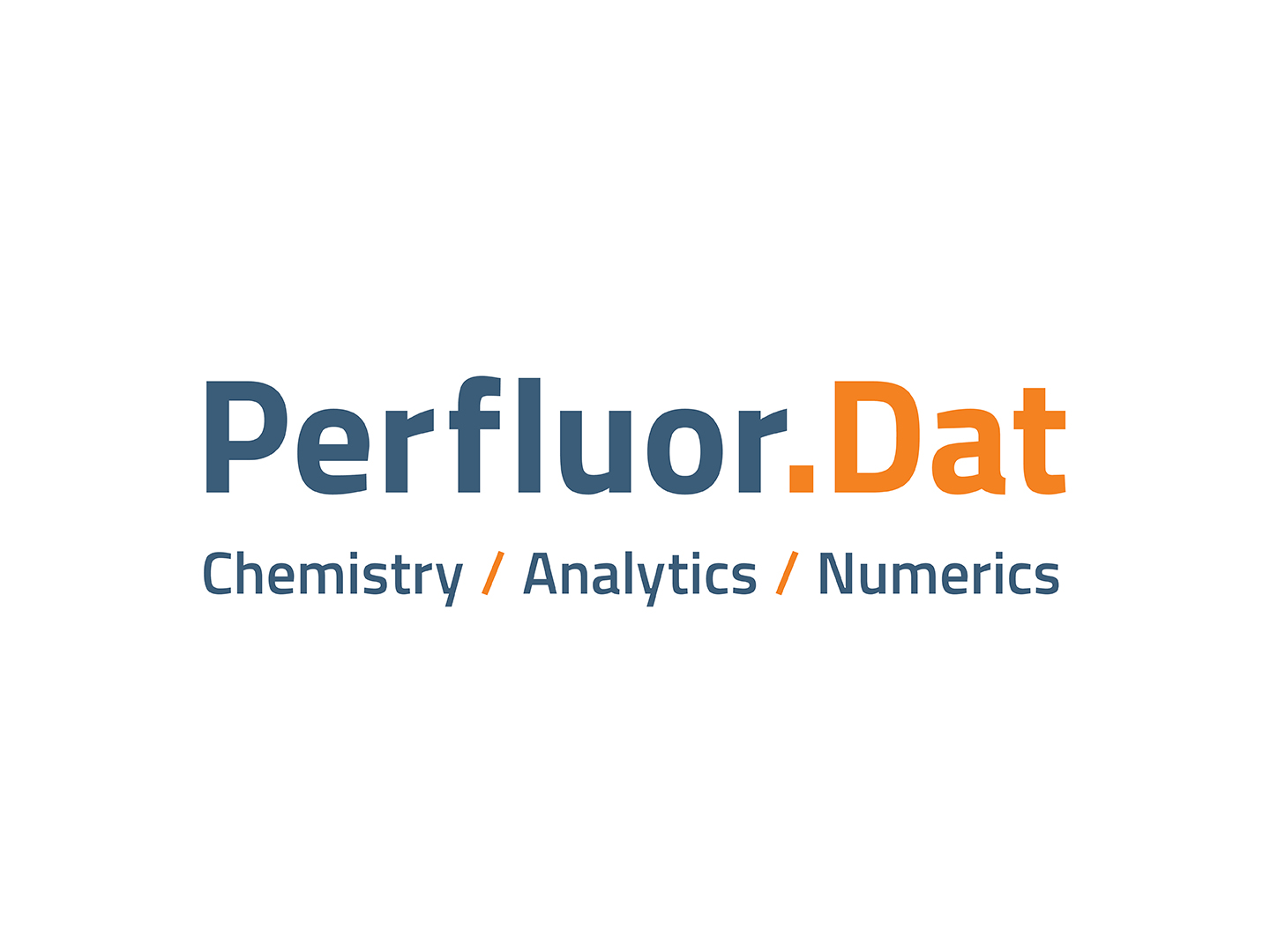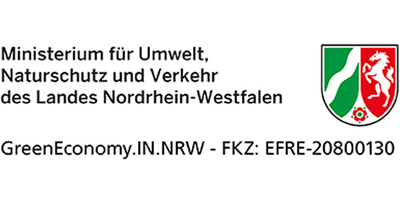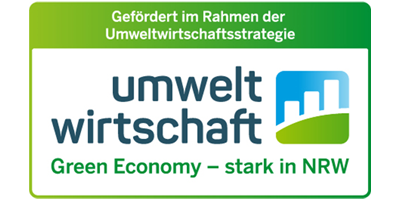Removal of PFAS from water
Fraunhofer UMSICHT and Cornelsen optimize PerfluorAd® process
Per- and polyfluoroalkyl substances (PFAS) pose a risk to humans and the environment due to their high stability and ubiquitous distribution. With the treatment technology PerfluorAd®, Fraunhofer UMSICHT and Cornelsen Umwelttechnologie GmbH have developed a market-ready process that removes PFAS from aqueous media cost-effectively and effectively. The current NRW project Perfluor.Dat is pursuing comprehensive data-based process optimization, among other things, in order to be able to adapt the process to the requirements of international markets.


PFAS are contained in countless industrial and everyday products - whether in medical technology, fire-fighting foams and lithium-ion batteries or in textiles, cosmetics and packaging. They enter the environment via the air and wastewater, where they contaminate soil and water. From there, they enter the food chain and ultimately the human organism. The human and ecotoxicological effects of this group of substances, which comprises over 10,000 different chemicals, are clearly documented. However, there are currently still no alternatives for many applications.
Pioneer in Germany
Fraunhofer UMSICHT and Cornelsen have been working together on the removal of PFAS from contaminated water and wastewater since 2008 - making them pioneers in Germany. The cooperation led to the development of the patented PerfluorAd® process for the economical purification of media such as extinguishing water with high PFAS concentrations and/or high organic background levels. However, many other water treatment projects and decontamination of PFAS-contaminated systems have already been carried out. Depending on the application, the PFAS-specific precipitation process of the PerfluorAd® process is combined with established treatment technologies such as ion exchange, membrane processes or activated carbon adsorption. The result is a minimization of the total amount of PFAS waste to be disposed of.
With the start of the new project, the PerfluorAd® process is now being further developed. Over the next three years, both the PFAS-specific precipitation process and the separation step for the PFAS-containing precipitate will be intensified as part of Perfluor.Dat. Functional co-additives and new analytical methods for process monitoring and control will be used. In addition, the process data collected in recent years from a wide range of applications is analyzed using pattern recognition. Ideally, this will result in a process model that can be verified by tests in a mobile test reactor.
Focus on internationalization
At the Perfluor.Dat kick-off meeting, the interdisciplinary team formed three specialist groups on the core topics of chemical process optimization, analytics and data collection. Dr. Stefano Bruzzano, the project coordinator at Fraunhofer UMSICHT, emphasizes the importance of the project: "The new R&D project has enabled us to set the course for making our PerfluorAd® process even more efficient and flexible for the future." The participants are not only focusing on national applications and the local market. The findings from Perfluor.Dat are also intended to support the increasing internationalization of the PerfluorAd® process, which is partly taking place under significantly different framework conditions.
Perfluor.Dat – Chemistry/Analytics/Numerics
Perfluor.Dat was part of the Green.Economy.IN.NRW innovation competition and is funded by the state and the EU.
Last modified:
 Fraunhofer Institute for Environmental, Safety and Energy Technology UMSICHT
Fraunhofer Institute for Environmental, Safety and Energy Technology UMSICHT

